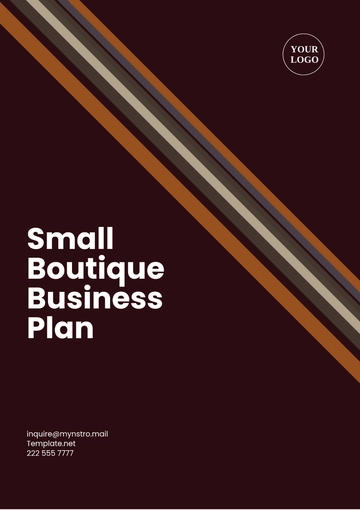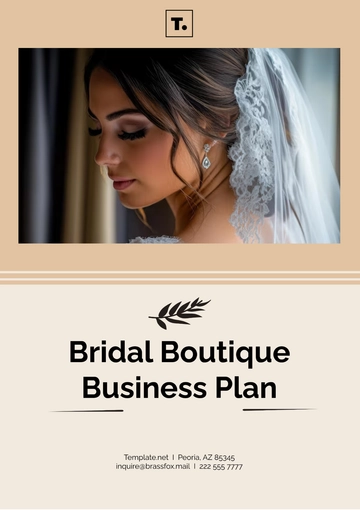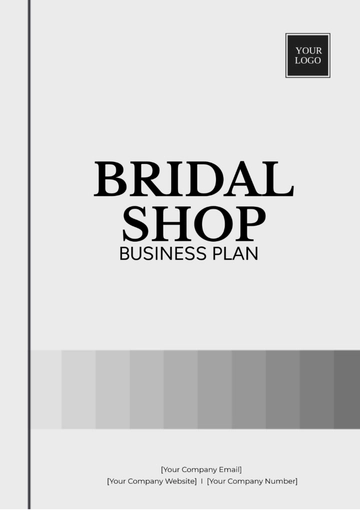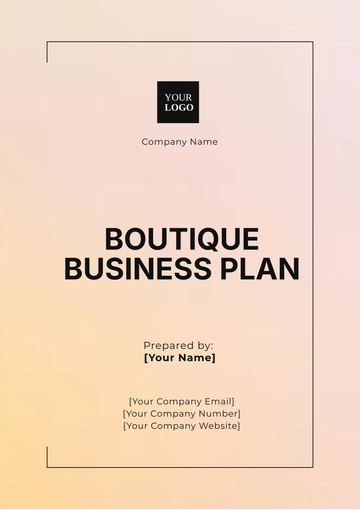Free Boutique Business Plan
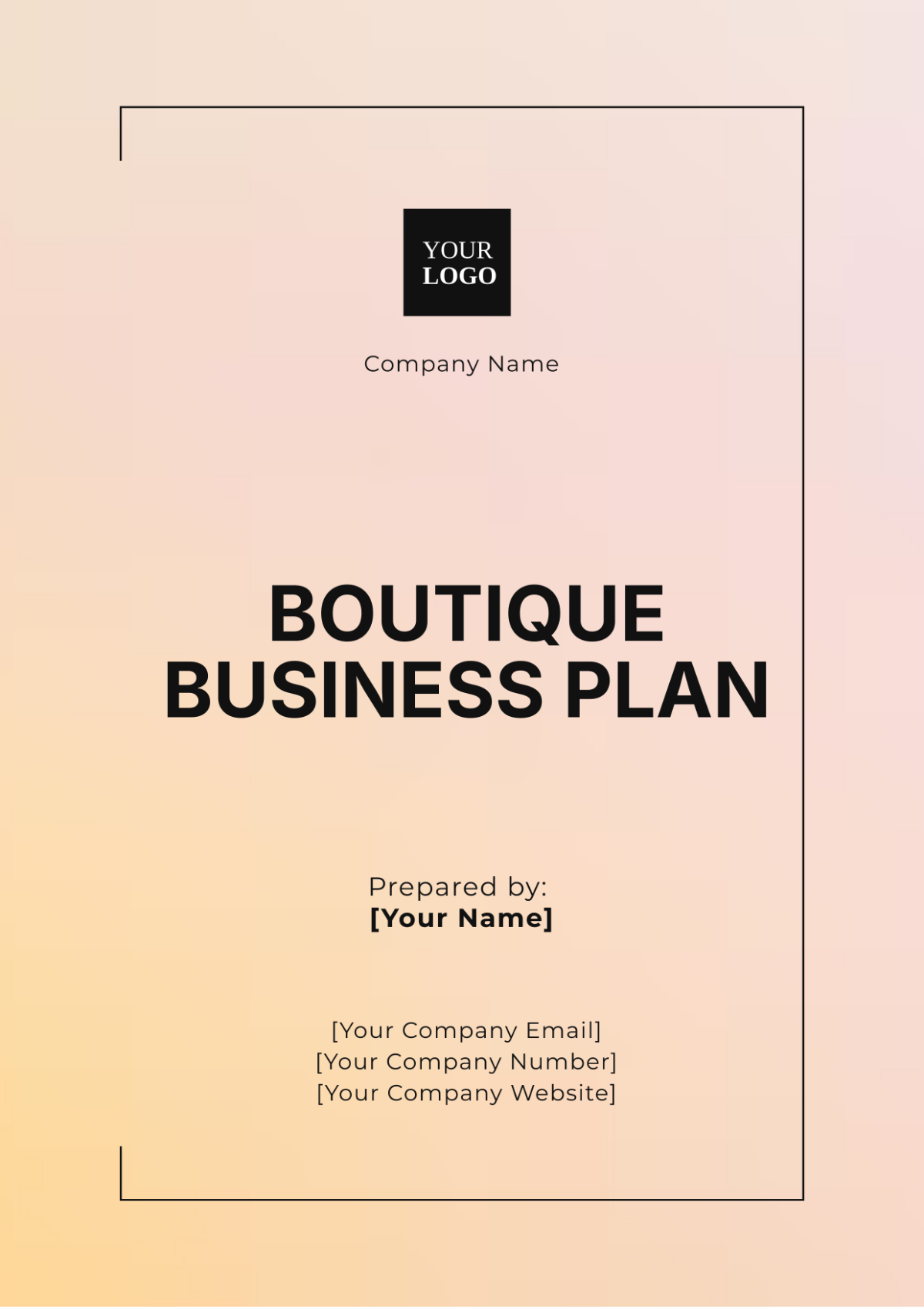
I. Executive Summary

[Your Company Name] is a boutique specializing in high-end fashion for men and women. We offer curated collections of clothing, accessories, and footwear from renowned designers, providing a luxurious shopping experience for our discerning clientele.
Mission Statement: Our mission is to redefine luxury retail by offering exclusive and innovative fashion pieces that reflect our client's unique tastes and personalities. We aim to inspire confidence and style while delivering exceptional customer service and memorable shopping experiences.
Vision Statement: To become a global leader in luxury fashion retail, recognized for our commitment to creativity, sustainability, and customer satisfaction. We envision a world where fashion is an expression of individuality and empowerment.
Key Objectives
Establish [Your Company Name] as a premier destination for luxury fashion enthusiasts.
Expand our online presence and reach a wider audience of fashion-conscious consumers.
Foster sustainable practices and partnerships that promote ethical fashion and environmental responsibility.
II. Business Description
[Your Company Name] offers a curated selection of designer clothing, accessories, and lifestyle products for upscale customers. Our boutique provides personalized styling services, VIP events, and a luxurious ambiance that elevates the shopping experience.
Target Market Analysis: Our target market includes affluent individuals aged 30-55 with a passion for luxury fashion and a desire for exclusivity. We also cater to corporate clients seeking professional attire and personalized wardrobe solutions.
Competitive Analysis: Key competitors include other high-end boutiques, department stores carrying designer labels, and online luxury retailers. Our competitive advantage lies in our curated collections, personalized service, and strong brand identity.
Unique Selling Proposition: [Your Company Name] distinguishes itself through exclusive partnerships with top designers, innovative fashion trends, and a focus on sustainable and ethically sourced products. Our dedication to quality and authenticity sets us apart in the luxury fashion market.
III. Products and Services
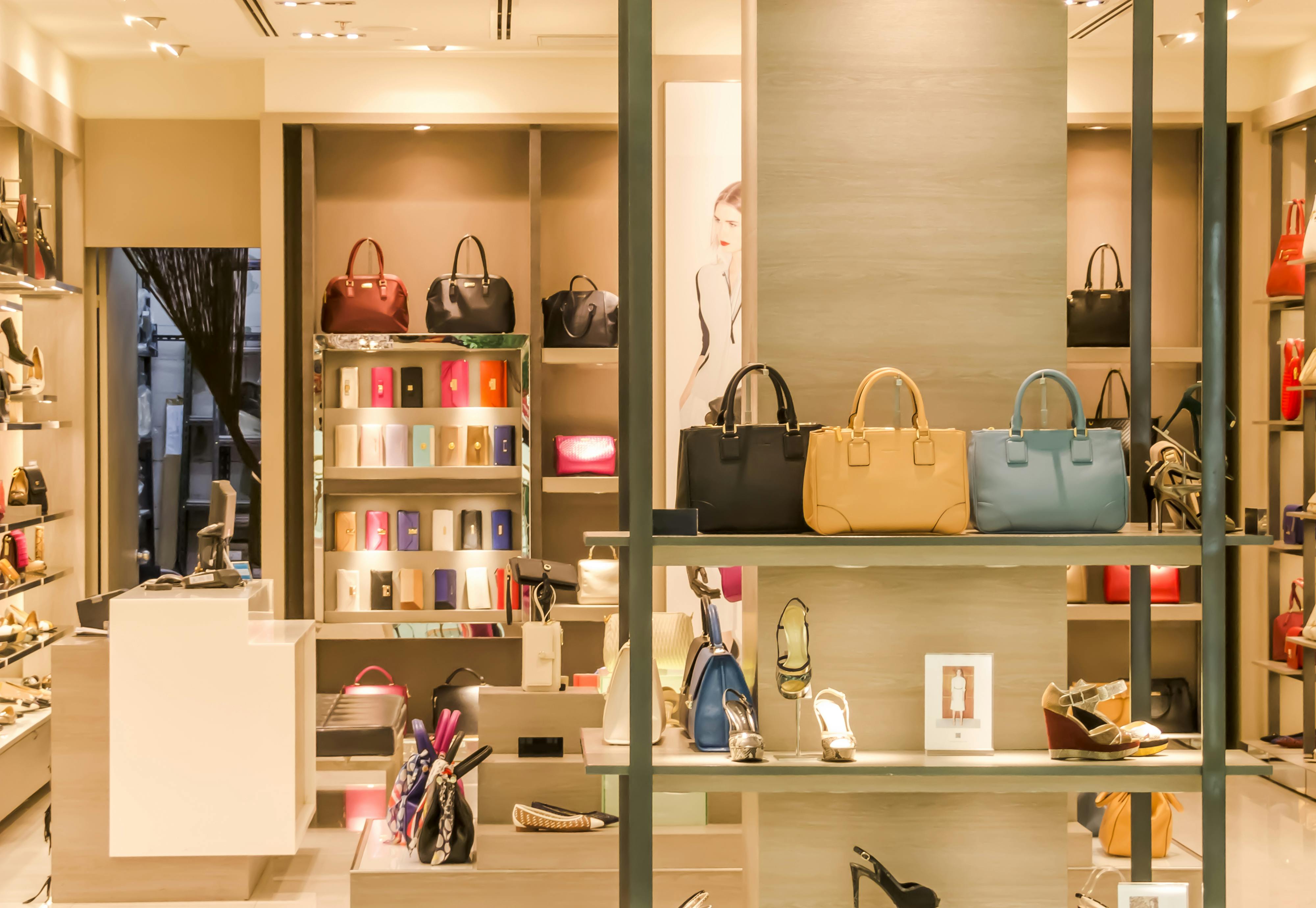
Description of Products Offered
Designer Apparel for Men and Women
Luxury Accessories (e.g., handbags, jewelry, sunglasses)
Premium Footwear (e.g., shoes, boots, sneakers)
Services Offered
Personal Styling Consultations
Custom Tailoring and Alterations
Private Shopping Events
IV. Market Analysis
Industry Overview: The luxury fashion industry continues to thrive, driven by global demand for premium brands, personalized experiences, and evolving consumer preferences. [Your Company Name] aims to capitalize on this market by offering exceptional products and services.
Market Trends: Trends in luxury fashion include sustainability, inclusivity, digitalization, and experiential retail. We stay ahead of trends by collaborating with emerging designers and embracing innovative technologies for customer engagement.
Market Segmentation
Segment 1: Affluent individuals seeking exclusive designer labels and limited-edition collections.
Segment 2: Fashion-forward professionals in need of upscale workwear and business attire.
Segment 3: Lifestyle enthusiasts interested in luxury accessories and unique fashion experiences.
Customer Analysis: Our target customers value quality, craftsmanship, and individuality. They seek premium products that reflect their lifestyle, status, and personal style preferences.
V. Marketing Plan
Marketing Strategies
Digital Marketing Campaigns: Social media ads, influencer partnerships, and targeted email campaigns.
Events and Collaborations: Fashion shows, trunk shows, brand collaborations, and VIP client events.
Brand Partnerships: Collaborations with luxury brands, designers, and lifestyle influencers.
Sales Forecast: Based on market research and industry trends, we project annual sales growth of 15-20%, with a target revenue of $2 million within three years of operation.
VI. Operational Plan
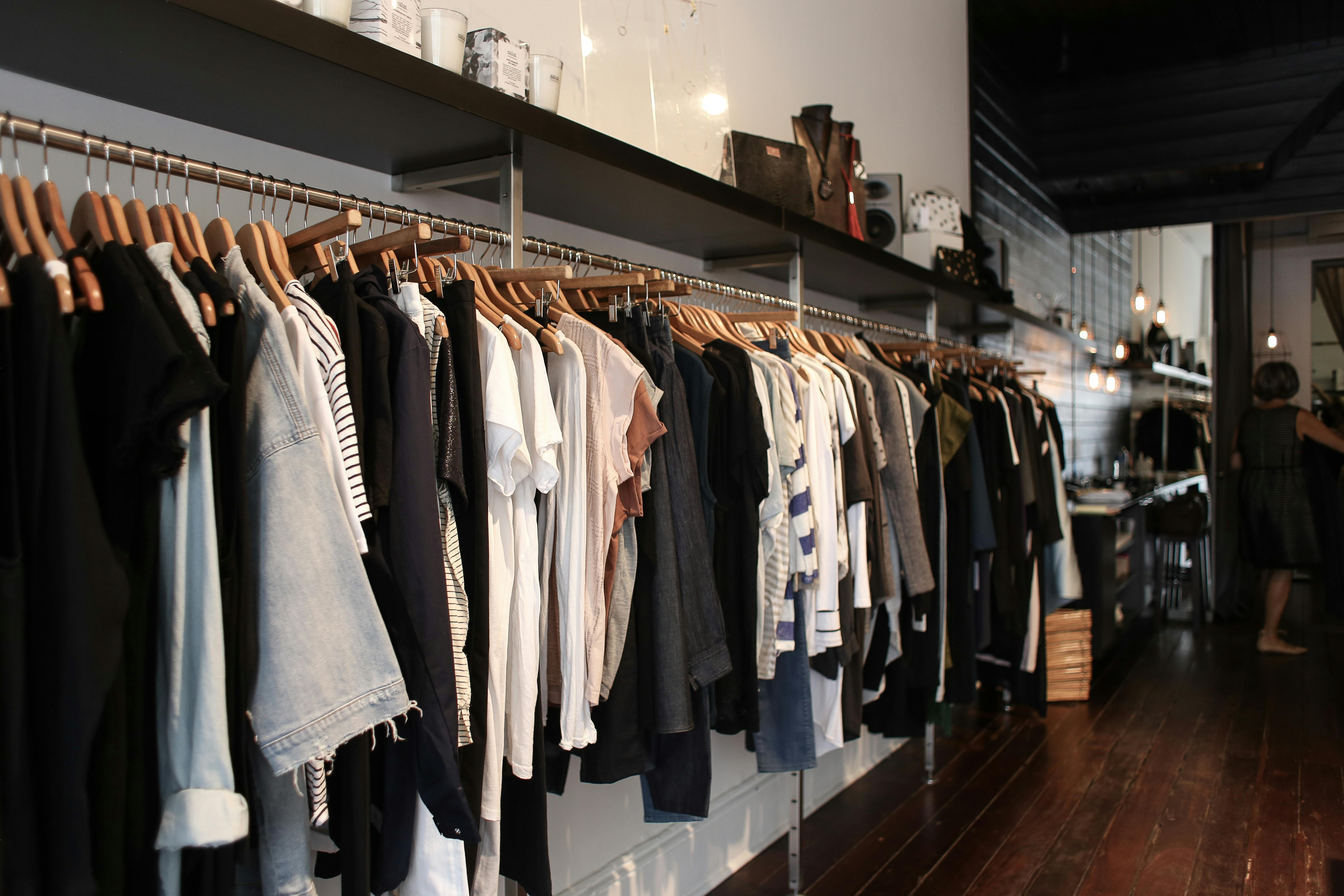
Location and Facilities
[Your Company Name] will be situated in a prime retail location with high foot traffic and visibility. Our boutique will feature elegant interior design, comfortable fitting rooms, and a dedicated area for personalized styling consultations.Inventory Management
We will maintain a carefully curated inventory of luxury fashion items, with regular updates to align with seasonal trends and customer preferences. Inventory management software will optimize stock levels and reorder processes.Supplier Relationships
Establishing strong relationships with reputable designers, brands, and suppliers is essential for securing exclusive products and maintaining quality standards. Negotiating favorable terms and ensuring timely deliveries are key priorities.Quality Control Measures
Stringent quality control measures will be implemented to ensure that all products meet our standards for craftsmanship, materials, and authenticity. Customer feedback and satisfaction surveys will guide continuous improvements.Operating Expenses
Operating expenses will include rent, utilities, staffing, marketing, inventory replenishment, and administrative costs. A detailed budget and financial forecast will ensure effective cost management and profitability.
VII. Management and Organization
Management Team
[Your Name] [Founder & CEO]
Experienced entrepreneur with a background in luxury retail and business management.
[Marketing Director]
Marketing expert with a focus on digital strategies and brand development.
Organizational Structure
[Your Company Name] will have a hierarchical organizational structure, with clear reporting lines and responsibilities for each team member. Regular meetings and performance reviews will foster communication and accountability.Roles and Responsibilities
Key roles include retail associates, stylists, inventory managers, marketing specialists, and administrative staff. Each role contributes to achieving our business objectives and delivering exceptional customer experiences.
VIII. Financial Plan

Startup Costs: Initial startup costs are estimated at $500,000, including lease agreements, inventory purchases, marketing campaigns, staffing, and legal expenses.
Revenue Projections: Projected revenues for the first year are $1 million, with a gross profit margin of 65%. Year-over-year growth is expected to reach 25% by the third year, with a revenue target of $2.5 million.
Expense Projections: Operating expenses, including fixed costs and variable expenses, are projected to be $750,000 in the first year, increasing with business expansion and revenue growth.
Profitability Analysis: Based on the financial projections, [Your Company Name] aims to achieve profitability within the first year of operations and maintain sustainable growth through strategic investments and cost-effective strategies.
Funding Requirements: We are seeking $750,000 in funding through a combination of equity investment, bank loans, and grants to support startup costs, working capital, and growth initiatives.
IX. Appendices
Legal Documents
Business License
Lease Agreements
Supplier Contracts
Market Research Data
Demographic Analysis
Competitor Analysis
Financial Statements
Income Statement
Balance Sheet
Cash Flow Statement
- 100% Customizable, free editor
- Access 1 Million+ Templates, photo’s & graphics
- Download or share as a template
- Click and replace photos, graphics, text, backgrounds
- Resize, crop, AI write & more
- Access advanced editor
Unleash boutique brilliance with Template.net's Boutique Business Plan Template. This editable and customizable tool is tailored for fashion and lifestyle entrepreneurs to showcase their boutique concepts effectively. Present your unique selling proposition, target market analysis, and branding strategies concisely. Utilize our AI Editor Tool to personalize your business plan, making it stylish and appealing for investors and customers.
You may also like
- One Page Business Plan
- Coffee Shop Business Plan
- Restaurant Business Plan
- Food Business Plan
- Real Estate Business Plan
- Executive Summary Business Plan
- Cover Page Business Plan
- Nonprofit Business Plan
- Daycare Business Plan
- Construction Business Plan
- Startup Business Plan
- Medical Business Plan
- Bakery Business Plan
- Service Plan
- Hotel Business Plan
- Catering Business Plan
- School Business Plan
- Healthcare Business Plan
- Transportation Plan
- Sports Plan
- Car Wash Business Plan
- Salon Business Plan
- Clothing Business Plan
- Farming Business Plan
- Boutique Plan
